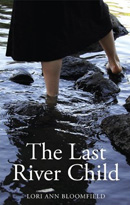
"Troubles are the very stuff life is made of."
So says a secondary character in Lori Ann Bloomfield's debut novel, The Last River Child— and so Bloomfield herself seems to believe. Troubles plague the lives of the people of Walvern, a fictitious Canadian town rife with gossip, superstition, and scandal. However, alongside these troubles lies a story of hope, and the love a person can find amidst rejection.
Set during World War One, The Last River Child centres around Peg Staynor, a young woman ostracized for being a "river child"—a bearer of bad luck to those around her. Tragedy and disappointment characterize the entire Staynor family. Peg's mother, Rose, endures a lonely childhood; her marriage brings a short-lived happiness that ends when Walvern's elite invoke the superstition of the river child to snub the Staynors. Peg's father, Seth, succumbs to the beliefs of the town and distances himself from his own family. Sarah, Peg's sister, allows dreams of popularity and fame to destroy any chance of joy that she may have had. One by one, Peg's family members desert her, and she is left to build a life on her own.
The small town life in Walvern is intruded upon by the events of World War One. Suddenly, personal tragedies become mere trifles compared to the devastation encompassing the world. Young men die leaving new brides alone to raise children, or return wounded and shell-shocked, unfit for life on a farm. The superstitious townsfolk blame Peg for many of their problems, and her isolation deepens.
Yet throughout this awful existence, Peg never dreams of leaving town. Love for the fields and forests of Walvern and the beauty of the Magurvey River run deep in her soul, and she cannot imagine living elsewhere. Bloomfield contrasts Peg's stability with the volatility of Sarah. Always the popular, pretty sister whose presence was desired at town functions, Sarah yearns to escape. Small-town life is not enough to fulfill her need for recognition.
Approval is something all the people of Walvern want, and Bloomfield's version of happiness is finding people who accept you for exactly who you are. The Last River Child is really a study in the human desire to "fit in," to find our place in the world. The novel's strength is in the characters, and in the realistic portrayal of Peg's emotions. Her journey from town outcast to an accepted member of society gives the reader hope. Strength of character really does prevail, and a life made of troubles just might take a turn for the better.
The Last River Child is also about change—the changes Peg makes to her life, and the
changes brought by World War One. As the title implies, Peg will be the last person to be
branded a "river child." The superstitions of the Walvern people die along with the soldiers
fighting in Europe, and a new age of modern thinking begins. Bloomfield's message is heartening
in our own time of war, as we hope for a more peaceful, tolerant future. Much like the people
of Walvern, might we all one day cast off superstition and prejudice in favour of acceptance?

Second Story Press, paperback, 9781897187661